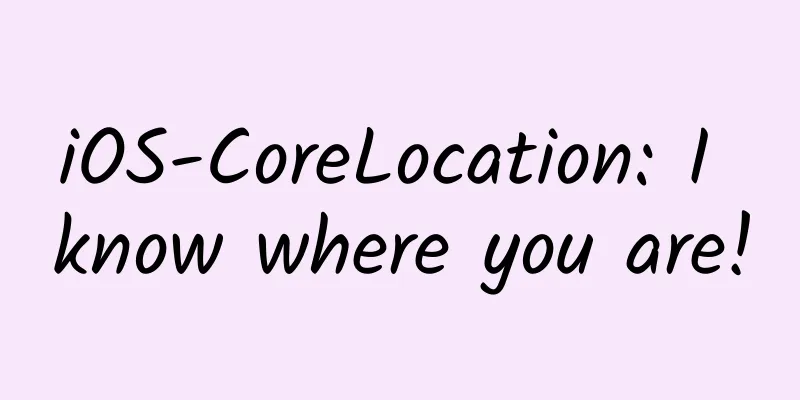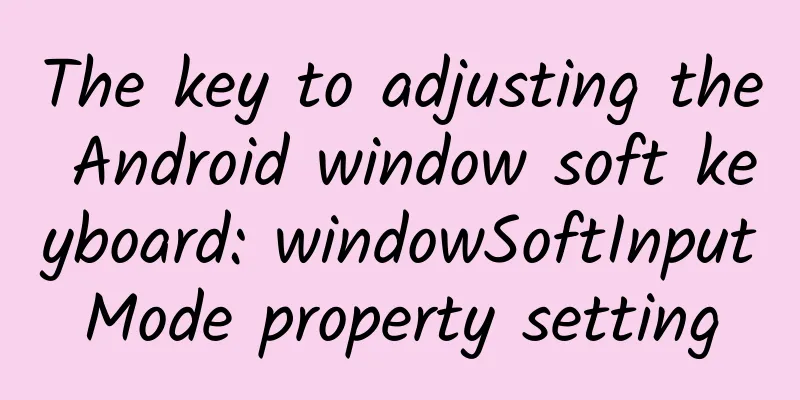iOS-CoreLocation: I know where you are!

|
1. Positioning Steps: Create a CLLocationManager instance and keep a strong reference to it Set the CLLocationManager delegate to listen for and get the updated location Start location update
Since in iOS8, developers need to actively request authorization from the system, the following steps are required in iOS8 and above: Set NSLocationWhenInUseUsageDescription or NSLocationAlwaysUsageDescription in info.plist file Use [_manager requestWhenInUseAuthorization] to request authorization in the code Implement the Manager's proxy method didChangeAuthorizationStatus: to determine whether to start location updates based on the status Parameter analysis In the Manager's proxy method locationManager:didUpdateLocations:, the locations parameter passed in is of type CLLocation. The main parameters of the CLLocation method are:
2. Direction How to use The same three steps as positioning, the difference is that no authorization is required to obtain the direction
Parameter analysis In the Manager's proxy method locationManager:didUpdateHeading:, the newHeading parameter passed in is of type CLHeading. The main parameters of the CLHeading method are:
3. Regional monitoring How to use It also requires roughly three steps, the first two of which are the same as positioning, and the third step is to create a range:
Proxy method (one in, one out)
HELP: It seems that it doesn't work in iOS8.3, neither on real devices nor on simulators, but works fine on iOS7.1! I don't know what's going on, if anyone knows please tell me. Thank you. 4. Geocoding & De-geocoding Geocoding means that you give it a place name and it returns the latitude and longitude of the place; reverse geocoding means that you give it a longitude and latitude and it returns a place name. If you do not use the positioning function, you do not need authorization. Geocoding
There are many available properties in CLPlacemark, you can go in and take a look. Reverse Geocoding
It is relatively simple to implement, the key lies in how to use this data! Extensions CoreLocation is still relatively troublesome to use, requiring authorization, judging the system version, etc., so it is recommended to use a third-party framework, such as: LocationManager is very good, using Block, it is very simple! |
>>: Foreign media comprehensive interpretation: iOS 9 everything we must know
Recommend
These 3 key points can save you 50% of your promotion costs!
Whether for marketers or operators , advertising ...
How to get an invoice for Tencent advertising recharge? Invoice application guide!
How to apply for an invoice 1.How to get the invo...
Interpreting the universe! This "powerful" astronomical telescope sets a new world record!
Produced by: Science Popularization China Author:...
How did a common and easily treatable venereal disease become an incurable disease?
What could be cured with a pill 20 years ago now ...
What are the essential elements of high-quality creativity? On the importance of a high-quality creative idea in bidding promotion
What should we do if we encounter the above situa...
Why do bacteria-like floating objects appear in front of your eyes when you look at things?
More than three hundred years ago, the Dutchman A...
The big-screen phone bet is right! iOS has reversed its global market share
[[125989]] Last year, Apple released two large-sc...
Layered operations of Toutiao users’ life cycle!
In user operations , user segmentation is a neces...
Activities, teams, promotions, tools, guaranteed to be the most comprehensive new media operations guide you have ever seen!
The rise of mobile Internet has made the college ...
How to write the copy for May 1st Labor Day?
It’s not Labor Day yet. The chat mode of " w...
For APP growth operations, just read this article!
This article will explain "growth" in 3...
How to become an operations expert, user growth system
Let’s first understand the difference between use...
Doulele·Douyin unblocking encyclopedia, helping you solve various difficult and complicated problems (banning words and templates)
Doulele·Douyin unblocking encyclopedia, helping y...
Washing dishes this way increases bacteria by 70 times! All of them are eaten by the stomach...
In daily life Many people have this habit at home...
What are the benefits of promoting WeChat mini programs?
1. Mini Programs combined with official accounts ...









